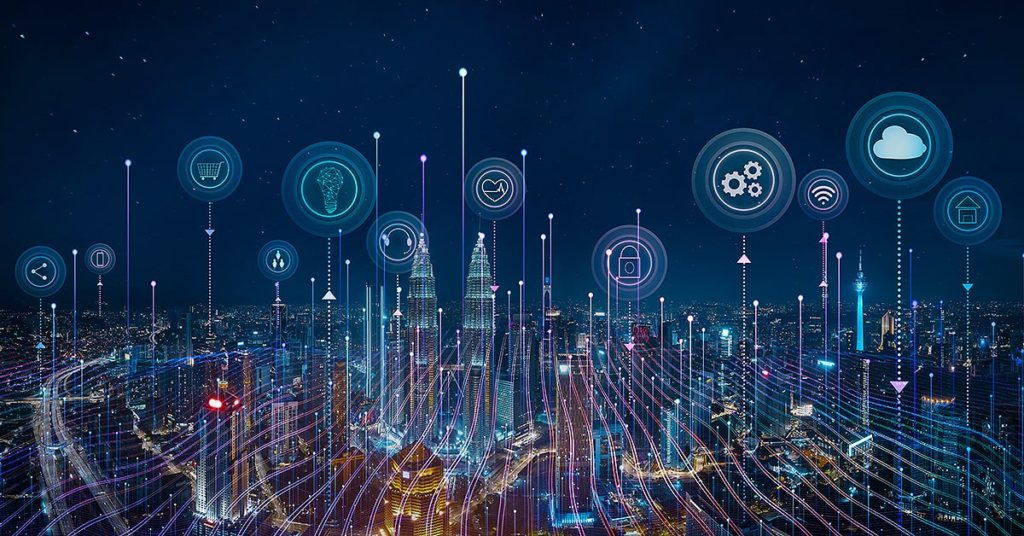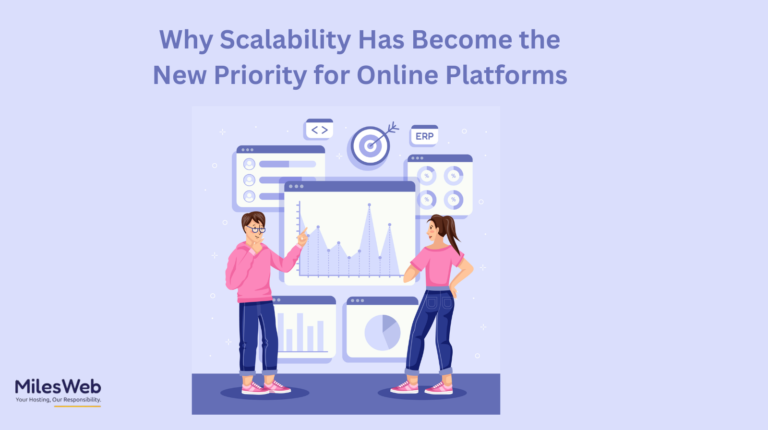The world is rapidly urbanizing. With over 56% of the global population projected to reside in cities by 2040, the pressure on urban infrastructure and resources is immense. To meet the challenges of this growth, cities are turning to technology. The concept of smart cities is emerging as a beacon of hope, promising to enhance quality of life, optimize resource utilization, and create sustainable urban environments.
At the heart of smart cities lies a complex network of interconnected devices and systems. The Internet of Things (IoT) is a cornerstone of this infrastructure. According to Statista, there will be more than 17 billion IoT devices worldwide by 2033, with smartphones leading the charge. However, beyond consumer electronics, sectors like connected vehicles, IT infrastructure, asset tracking, and smart grids are also poised to become massive IoT markets.
Software is the backbone of these interconnected systems. The intelligent layer transforms raw data into actionable insights, enabling cities to make informed decisions, optimize operations, and deliver enhanced services to their citizens.
This article will delve into the exciting world of developing software for smart cities. We will explore the technologies, challenges, and opportunities that shape this dynamic field.
What is a Smart City?
A smart city is a municipality that utilizes information and communication technologies (ICT) to enhance operational efficiency, share information with the public, and improve the quality of life for its citizens. It’s essentially an urban area that employs digital technologies to optimize city functions, promote economic growth, and enhance the overall well-being of its inhabitants.
What are the types of Software Used in Smart Cities?
The transformation of urban areas into smart cities hinges on the deployment of advanced software solutions. These software systems address various aspects of urban management, from transportation and energy to public safety and environmental monitoring. Below are key types of software used in smart cities, illustrated through practical scenarios.
1. Integrated Data Platforms
Scenario: City Data Hub for Real-Time Decision Making
In the bustling metropolis of Smartville, the city administration has deployed an Integrated Data Platform, known as the City Data Hub. This platform aggregates data from various city departments, IoT sensors, and public services. For instance, the traffic department’s data on road conditions, the health department’s data on air quality, and the utility companies’ data on water and electricity usage all feed into this central hub.
Functionality:
- Real-time data integration and analytics.
- Dashboards for city officials to monitor key performance indicators.
- Predictive analytics to forecast issues such as water shortages or traffic congestion.
Benefits:
- Enhanced decision-making through comprehensive data insights.
- Improved response times to urban issues.
- Efficient resource allocation based on predictive models.
2. Intelligent Transportation Systems (ITS)
Scenario: Smart Traffic Management in Metro City
Metro City experiences significant traffic congestion during peak hours. To address this, the city has implemented an Intelligent Transportation System (ITS). This system uses software that processes data from traffic cameras, sensors, and GPS devices on public transport and private vehicles.
(Image Source: Link)
Functionality:
- Real-time traffic monitoring and adaptive signal control.
- Route optimization for public buses and emergency vehicles.
- Dynamic toll pricing based on traffic density.
Benefits:
- Reduced traffic congestion and travel times.
- Lower vehicle emissions due to smoother traffic flow.
- Improved public transit efficiency and reliability.
3. Energy Management Systems
Scenario: Smart Grid in Green City
Green City has rolled out a Smart Grid system to enhance its energy efficiency and sustainability. This software-driven system manages the distribution of electricity from renewable sources like solar panels and wind turbines, integrated with traditional power plants.
(Image Source: Link)
Functionality:
- Real-time monitoring and balancing of energy supply and demand.
- Automated demand response to reduce load during peak usage times.
- Integration of distributed energy resources like home solar panels.
Benefits:
- Reduced energy waste and lower greenhouse gas emissions.
- Increased use of renewable energy sources.
- Enhanced grid reliability and resilience.
4. Environmental Monitoring Software
Scenario: Air Quality Monitoring in CleanAir City
CleanAir City has deployed a network of air quality sensors across its urban area, all connected to a central Environmental Monitoring Software system. This software collects data on pollutants and analyzes air quality trends.
(Image Source: Link)
Functionality:
- Real-time air quality data collection and analysis.
- Public alerts for high pollution levels via mobile apps and digital billboards.
- Predictive modeling to forecast pollution episodes.
Benefits:
- Improved public health through timely alerts and information.
- Data-driven policies for reducing pollution sources.
- Enhanced community awareness and engagement in environmental issues.
5. Public Safety and Emergency Response Systems
Scenario: Smart Emergency Response in Safety City
Safety City has implemented a Smart Emergency Response System to coordinate its police, fire, and medical services. This software integrates data from emergency calls, surveillance cameras, and social media feeds.
(Image Source: Link)
Functionality:
- Real-time incident detection and resource dispatch.
- Integrated communication between emergency services.
- Predictive analytics to identify high-risk areas and prevent incidents.
Benefits:
- Faster response times to emergencies.
- Better coordination among different emergency services.
- Proactive measures to enhance public safety.
6. Water Management Systems
Scenario: Smart Water Network in AquaCity
AquaCity faces challenges with water distribution and leakages. To tackle this, the city has implemented a Smart Water Network system. This software monitors water flow, pressure, and quality across the city’s water infrastructure.
(Image Source: Link)
Functionality:
- Real-time monitoring of water distribution and usage.
- Leak detection and automated alerts for maintenance teams.
- Optimization of water usage for different sectors (residential, industrial, agricultural).
Benefits:
- Reduced water loss and improved distribution efficiency.
- Enhanced water quality through continuous monitoring.
- Better planning and management of water resources.
Challenges and Solutions in Developing Smart City Software
- Challenge: Interoperability
Different systems and devices within a smart city often employ incompatible protocols and standards, hindering seamless data exchange and communication. This lack of interoperability hampers the efficient operation of smart city services.
(Image Source: Link)
Solution: Adhere to open standards and protocols for data exchange, such as IoT protocols (MQTT, CoAP), data formats (JSON, XML), and communication protocols (HTTP, REST). Develop and implement Application Programming Interfaces (APIs) to enable different systems to interact and share data effectively. Encourage collaboration among stakeholders to promote the adoption of common standards.
- Challenge: Cybersecurity
Protecting sensitive citizen data and critical infrastructure from cyber threats is a paramount concern in smart cities. The interconnected nature of smart city systems creates vulnerabilities that malicious actors can exploit.
(Image Source: Link)
Solution: Invest in robust cybersecurity measures, including firewalls, intrusion detection systems, and encryption technologies. Conduct regular security audits and vulnerability assessments to identify and address potential weaknesses. Implement strong access controls and user authentication mechanisms. Raise cybersecurity awareness among city personnel and educate citizens about best practices for protecting personal information.
- Challenge: Privacy Concerns
Citizens may be hesitant to share personal data, even if it benefits the city. Concerns about data misuse and surveillance can erode public trust in smart city initiatives.
(Image Address: Link)
Solution: Develop transparent data privacy policies that clearly outline how personal data will be collected, used, shared, and protected. Implement robust data protection measures, such as data minimization and anonymization. Provide citizens with control over their data, allowing them to choose what information they share and how it is used. Engage in open dialogue with the community to build trust and address privacy concerns.
- Challenge: Digital Divide
Ensuring equitable access to smart city services for all citizens, regardless of socioeconomic status, is essential to avoid exacerbating existing inequalities.
(Image Source: Link)
Solution: Implement affordable and accessible broadband infrastructure to bridge the digital divide. Offer digital literacy programs to equip citizens with the skills to use smart city technologies. Provide public access points to smart city services, such as community centers and libraries. Develop inclusive smart city solutions that consider the needs of people with disabilities.
- Challenge: Cost and Sustainability
Implementing and maintaining smart city infrastructure can be expensive, and long-term financial sustainability is a challenge.
(Image Source: Link)
Solution: Explore innovative funding models, such as public-private partnerships, to share costs and risks. Prioritize projects with clear return on investment and measurable benefits. Focus on energy-efficient technologies and sustainable practices to reduce operating costs. Implement smart metering and demand-response programs to optimize energy consumption.
- Challenge: Public Acceptance
Gaining public support and understanding of smart city initiatives is crucial for successful implementation. Resistance to change and concerns about potential negative impacts can hinder progress.
(Image Source: Link)
Solution: Engage the community throughout the planning and development process to foster ownership and buy-in. Communicate the benefits of smart city projects clearly and transparently. Address public concerns and misconceptions proactively. Celebrate successes and share positive outcomes to build public trust and enthusiasm.
Conclusion:
To sum up it all we can see that the future of smart cities is bright, and software will undoubtedly be a driving force behind this transformation. By leveraging the power of technology, we can create cities that are not only smarter but also more equitable and resilient.






